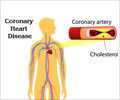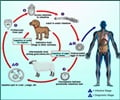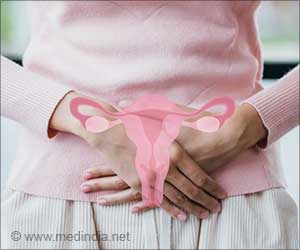Considering both direct and indirect costs, the financial burden on a woman who has chest pain and blocked coronary arteries may total more than $1 million during her lifetime.
Considering both direct and indirect costs, the financial burden on a woman who has chest pain and blocked coronary arteries may total more than $1 million during her lifetime . But even a woman who suffers from angina without an obstruction can expect her condition to take a toll in the neighborhood of $800,000, according to a report.
C. Noel Bairey Merz, M.D., medical director of the Preventive and Rehabilitative Cardiac Center at Cedars-Sinai Medical Center, medical director of Women’s Health, and one of the article’s authors, said researchers looked at the cases of 883 women over five years in reaching their conclusions.'Total cumulative costs were higher for women who have two or three blocked vessels, due largely to the number of outpatient visits and procedures performed. But women with nonobstructive coronary artery disease (CAD) or one blocked artery had proportionately higher drug costs, which resulted in higher indirect costs,' said Bairey Merz, chair of the Women’s Ischemia Syndrome Evaluation (WISE), from which the estimates were derived.
WISE is a multi-center study launched in 1996 that is funded by the National Heart, Lung and Blood Institute of the National Institutes of Health. This research also was supported by a grant from the National Center for Research Resources.
The research team totaled direct costs from cardiovascular hospitalizations, coronary interventions, outpatient testing, and visits to health care professionals. Indirect costs included such factors as hours lost from work for health care, estimated reduced productivity hours, transportation charges, and the costs of drugs and medical devices.
For women with obstructive CAD, average lifetime costs were estimated to be more than $1 million. But even for those with nonobstructive CAD the average was $767,288 – and this is a group that has been left out of earlier estimates of the economic burden of heart disease; most studies have focused almost exclusively on men.
'If we had an adequate understanding of the different causes of chest pain in women, we wouldn’t be spending all this money on women who have open arteries but keep cycling through the system. This is not a small problem, and it is not going to go away, which means we must continue to invest in research specific to women,' Bairey Merz said.
Advertisement
In a study published earlier this year, the WISE researchers shed light on a female-specific vascular disorder that often causes women to suffer from heart-related chest pain even though their arteries are not blocked by plaque deposits. Two areas of dysfunction – one in the cells lining coronary arteries and another in the tiny vessels branching within the heart itself – combine to deprive the heart muscle of oxygen. These functional rather than structural abnormalities, while not seen on coronary angiography, result in abnormal resistance that limits blood flow to the heart tissue.
Advertisement
Compared with women who have blocked arteries, women with nonobstructive CAD are at lower risk for cardiovascular death, but their ongoing symptoms and therapeutic interventions affect their general well-being and quality of life. Moreover, according to the study, one woman in five with nonobstructive CAD required hospitalization at some point during the five-year follow-up period, and 46 percent of those with nonobstructive CAD had typical angina at five years, a rate similar to that of women with blocked arteries.
Source-Newswise
SRM











